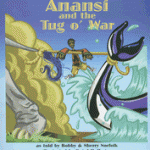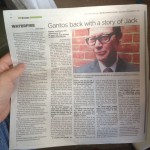 I thought a lot about the impact of violence as I wrote Burn Baby Burn (Candlewick 2016). My protagonist Nora Lopez would have seen a lot that year, both inside her own family and in situations all around her.
I thought a lot about the impact of violence as I wrote Burn Baby Burn (Candlewick 2016). My protagonist Nora Lopez would have seen a lot that year, both inside her own family and in situations all around her.Guest Blogger: Meg Medina
 I thought a lot about the impact of violence as I wrote Burn Baby Burn (Candlewick 2016). My protagonist Nora Lopez would have seen a lot that year, both inside her own family and in situations all around her.
I thought a lot about the impact of violence as I wrote Burn Baby Burn (Candlewick 2016). My protagonist Nora Lopez would have seen a lot that year, both inside her own family and in situations all around her.



 When a manuscript comes across my art table there’s always a little bit of terror attached to it. What’s the author trying to relate? How should I approach it? How would a parent, a librarian, and, most important, a child look at my paintings? If, as an artist, I can’t quell some of these questions, they’ll derail the creative process.
When a manuscript comes across my art table there’s always a little bit of terror attached to it. What’s the author trying to relate? How should I approach it? How would a parent, a librarian, and, most important, a child look at my paintings? If, as an artist, I can’t quell some of these questions, they’ll derail the creative process.

 Blistery red rashes and hallucinations, lethal germs in food, flea bites that kill— these are all subjects that have captured my attention, and I hope will grab readers’ attention, too. Intriguing medical stories speak to my background in zoology, an interest in history, and experience teaching middle school science. As an author, I get to be a sleuth—searching for hidden details and fascinating images to illustrate my books; I never know what remarkable material I’ll uncover next.
Blistery red rashes and hallucinations, lethal germs in food, flea bites that kill— these are all subjects that have captured my attention, and I hope will grab readers’ attention, too. Intriguing medical stories speak to my background in zoology, an interest in history, and experience teaching middle school science. As an author, I get to be a sleuth—searching for hidden details and fascinating images to illustrate my books; I never know what remarkable material I’ll uncover next.
 The Trouble in Me (Farrar 2015) is, in part, an answer to the question “How does one go bad?” It’s something I’ve been asked often since the publication of Hole in My Life (Farrar 2002), which features my drug smuggling and life in prison.
The Trouble in Me (Farrar 2015) is, in part, an answer to the question “How does one go bad?” It’s something I’ve been asked often since the publication of Hole in My Life (Farrar 2002), which features my drug smuggling and life in prison.